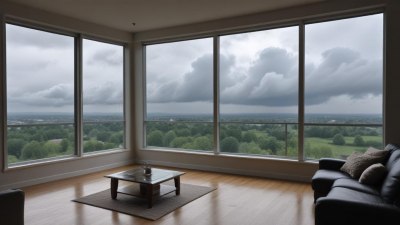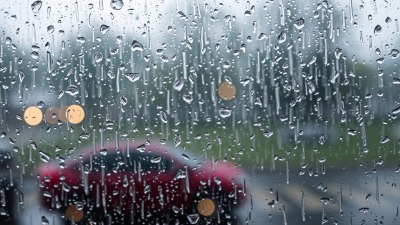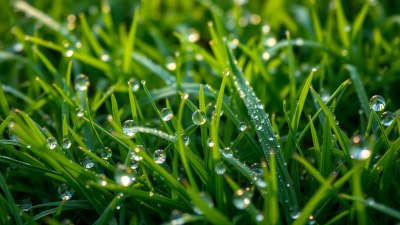Why It Feels Colder When You’re Wet The Science of Heat Loss
Explore the science behind why wetness makes us feel colder, involving heat loss principles and physiological responses.

Image by freepic-diller on Freepik
The feeling of coldness when wet is a common experience many of us can relate to, especially in colder seasons or after getting caught in the rain. But what exactly causes this sensation? Understanding the science of heat loss and the physiological responses of our body can shed light on this phenomenon.
The Basics of Heat Transfer
To comprehend why wet skin feels colder, we must first understand the fundamental principles of heat transfer. Heat can be transferred through conduction, convection, and evaporation. These processes dictate how temperature changes occur within materials and between materials and their surrounding environments.
Conduction and Temperature
Conduction is the process where heat moves through materials via direct contact. When your skin is dry, it has a certain temperature, and if the air temperature surrounding you is lower, heat will naturally flow from your body to the colder air. However, when your skin is wet, the dynamics change. Water has a higher thermal conductivity than air, meaning it can absorb heat more efficiently from your skin. This leads to an increased rate of heat loss, making you feel colder much faster.
Convection: The Impact of Air Movement
Convection is another factor that plays a crucial role in how temperature is experienced by our bodies. When air moves, it can carry heat away from your body. In the case of wet skin, the moisture enables more effective heat transfer between your body and the air. When air blows against wet skin, it enhances the evaporation process, which is a key mechanism for cooling. Thus, windy conditions can exacerbate the cold feeling when wet because the moving air speeds up heat loss.
Evaporation and Cooling Effects
Evaporation is a significant player in how we experience temperature, especially when it comes to moisture on our skin. When water evaporates, it is converted from a liquid to a vapor state. This phase change requires heat energy, commonly sourced from the body. As water molecules escape into the air, they take away with them a portion of thermal energy, thereby cooling the skin surface. This is known as the cooling effect of evaporation. The sweat on our skin works on the same principle, which is why we feel cooler after sweating during physical activity.
The Role of Humidity
Humidity levels in the environment can further affect how cold we feel when wet. High humidity means an ample amount of water vapor is already in the air, which slows down the evaporation process. In contrast, in low-humidity conditions, the evaporation rate is heightened, leading to more significant heat loss from the body. Thus, on a humid day, if you get wet, you’re likely to feel colder than you would on a dry day with the same temperature.
Physiological Responses to Cold
Our body has various mechanisms to respond to cold temperatures, especially when wet. When exposed to cold, blood vessels beneath the skin constrict, a process known as vasoconstriction. This decreases blood flow to the skin, reducing heat loss. However, when wet, this response may not be effective enough to prevent excessive heat loss, resulting in a feeling of cold despite the body's internal efforts to maintain warmth.
Behavioral Adjustments
When we feel cold, our body responds with behavioral adjustments. We may start to shiver, which is an involuntary muscle movement aimed at generating heat. Additionally, we might seek warmth by finding shelter or drying ourselves off. These adjustments are crucial for preventing hypothermia, especially in situations where prolonged exposure to cold and wet conditions occurs.
Understanding Hypothermia
Hypothermia is a significant risk when one is wet and exposed to cold temperatures for too long. It occurs when body temperature drops below the normal range of approximately 98.6°F (37°C). Symptoms include shivering, confusion, and lethargy. Wet conditions, combined with wind chill, can lead to rapid heat loss and increase the chances of hypothermia. It's essential to recognize when the body begins to lose heat to take necessary precautions.
Practical Implications
Understanding the science behind feeling colder when wet has practical implications. For instance, individuals engaging in outdoor activities during cold, wet weather should be equipped with appropriate rain gear that minimizes moisture on the skin. Fabrics designed for outdoor use often feature moisture-wicking properties, which help draw sweat away from the skin, keeping it dry and retaining warmth.
Layering Strategies
Effective layering is another essential strategy for staying warm in wet and cold conditions. Layers trap warm air close to the body, and moisture-resistant outer layers prevent wind and rain from penetrating. An effective clothing system can help mitigate the cold effects of being wet and ensure that heat loss is minimized.
The feeling of coldness when wet is a result of various factors, including heat transfer through conduction, convection, and evaporation, coupled with physiological responses of the body. When wet, heat loss is accelerated, and environmental conditions, like humidity, further influence our cold sensations. Understanding these principles is crucial for taking preventive measures against discomfort and potential health risks in cold and damp conditions.











